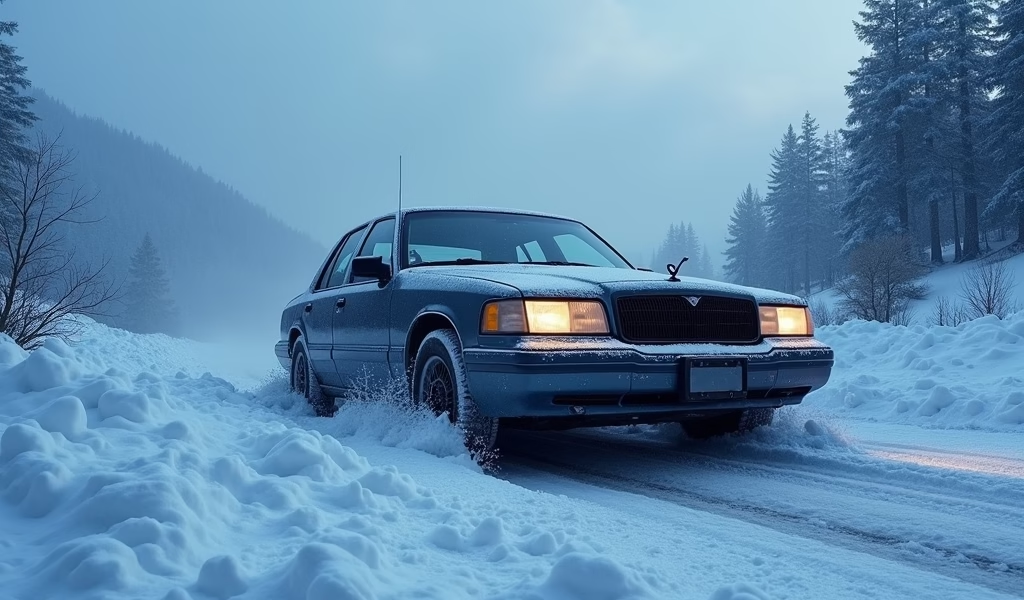Overview
This guide details five essential winter treatments for snow vehicles: undercoating protection, engine block heaters, specialized winter lubricants, electrical system protection, and fuel system treatments. Each preventative measure helps combat the unique challenges of winter operation—including corrosion, freezing components, battery drain, and fuel issues—ultimately saving money on repairs while ensuring reliable performance in harsh conditions.
Table of Contents
- Understanding Snow Vehicle Maintenance Needs
- Treatment #1 – Undercoating Protection
- Treatment #2 – Engine Block Heaters
- Treatment #3 – Specialized Winter Lubricants
- Treatment #4 – Electrical System Protection
- Treatment #5 – Fuel System Treatments
- Keeping Your Snow Vehicles Winter-Ready
- Frequently Asked Questions
Boy, oh boy, does winter throw a wrench in the works when it comes to your snow vehicles! As temperatures nosedive and those pretty little snowflakes start piling up, your trusty winter companions face a whole host of challenges. At Knows Your Car, we’ve seen it all – the good, the bad, and the downright frozen. Trust me, proper maintenance isn’t just a good idea; it’s the difference between winter adventures and being stranded in a snowbank wondering where it all went wrong.
Let me walk you through five battle-tested treatments that’ll keep your snow vehicles purring when Old Man Winter brings his A-game. Whether you’ve got a snowmobile, an ATV with tracks, or a dedicated snow blower, these tips will save you headaches (and cold fingers) down the road.
Understanding Snow Vehicle Maintenance Needs
Let’s not sugarcoat it – winter is brutal on machinery. Your snow vehicles take an absolute beating from everything Mother Nature throws their way. Salt, moisture, and temperatures that would make a penguin shiver create the perfect storm for mechanical nightmares.
In my 20+ years turning wrenches, here’s what I see killing snow vehicles prematurely:
- Corrosion that eats through metal like a hungry teenager through pizza
- Components frozen stiffer than last week’s leftover casserole
- Batteries giving up the ghost when you need them most
- Fuel systems turning to sludge or jelly
- Drivetrains crying uncle under extreme stress
Your winter rides aren’t like summer toys – they need special attention. They’re battling an environment where temps swing wildly, moisture is everywhere, and abrasive gunk like sand and salt is just part of the daily grind. Standard maintenance? That ain’t gonna cut it, folks.
If you’re wondering which vehicle might handle these conditions best, check out our guide to the best vehicles for snow before making any purchase decisions.

Treatment #1 – Undercoating Protection
Think of undercoating as a warm winter jacket for your vehicle’s vulnerable underbelly. Without it, you’re basically inviting rust to the party – and trust me, rust never RSVP’s before showing up and ruining everything.
You’ve got three main flavors of undercoating to choose from:
- Oil-based sprays that creep into every nook and cranny
- Rubberized coatings that create a thick, protective shield
- Wax-based products that split the difference between the other two
Application isn’t rocket science, but don’t rush it! For best results, get it done professionally before the first snowflake falls. If you’re racking up serious miles, schedule a mid-season check-up too. The undercarriage needs to be clean and bone-dry before application, and you’ve gotta let that stuff cure properly. Skip those steps, and you might as well have saved your money.
The payoff is worth every penny though. One of my commercial clients – guy runs a small snow removal fleet – extended his trucks’ service life by nearly 40% after I convinced him to get serious about undercoating. His repair bills plummeted faster than temperatures in January!
According to the National Association of Corrosion Engineers, proper protection can prevent up to 90% of salt-related vehicle damage. That’s not just pennies – we’re talking thousands in savings over the life of your vehicle.
Treatment #2 – Engine Block Heaters
When it’s cold enough to freeze the ears off a brass monkey, your engine oil turns thicker than concrete. Trying to start an engine in those conditions? It’s like trying to swim through peanut butter – painful and not very effective.
Enter the engine block heater – a simple gadget that’ll save your engine and your sanity.
These nifty devices keep your engine’s coolant and oil from turning to sludge, making cold starts a breeze instead of a nightmare. Installation difficulty varies, but most setups can be knocked out in a couple hours by someone who knows which end of a wrench is which.
Pro tip: Hook that block heater up to a programmable timer. No need to waste electricity keeping it plugged in 24/7. For most vehicles, 2-4 hours of pre-heating is plenty. Your electric bill will thank you!
The benefits go way beyond just easier starts. Engines that start warm:
- Reach optimal temperature faster (less fuel wasted during warm-up)
- Produce fewer emissions during that critical warm-up period
- Experience dramatically less wear and tear on crucial components
If you’re driving one of the best SUVs for snow, a block heater is still a smart addition – even the toughest vehicles benefit from a little TLC in extreme conditions.
Treatment #3 – Specialized Winter Lubricants
Regular lubricants in winter? That’s like wearing flip-flops in a blizzard – technically possible but a terrible idea. Standard lubes can thicken up or even solidify when temperatures plummet, leaving critical components high and dry when they need protection most.
Here’s where you need to focus your lubrication efforts:
- Transmissions and differentials (the lifeblood of your drivetrain)
- Drive chains and tracks (especially on snowmobiles and tracked ATVs)
- Control cables and pivot points (these seize up first)
- Suspension components (they’re taking a beating in the rough stuff)
Always look for products specifically designed for winter use. Check those temperature ratings and make sure they’ll handle the coldest days in your area. Synthetics generally run circles around conventional lubes when the mercury drops, though they’ll hit your wallet a bit harder upfront.
Don’t think your summer maintenance schedule cuts it for winter. You need to step up your game when operating in snow and ice. Create a maintenance calendar and stick to it like it’s religion. Future you will be mighty grateful when everyone else is stuck in their garages with seized components.
Research from The Society of Tribologists and Lubrication Engineers suggests that using the proper winter-grade lubricants can reduce wear by up to 60% in sub-zero conditions. That’s the difference between a repair and a replacement!
Treatment #4 – Electrical System Protection
Cold weather is about as kind to electrical systems as a cat is to a mouse. Batteries lose serious juice as temperatures drop, while all those cozy creature comforts (heated seats, defrosters, lights) suck power like nobody’s business. It’s a recipe for being stranded if I’ve ever seen one.
Battery maintenance isn’t optional – it’s survival. Here’s your winter battery checklist:
- Get a quality battery tender for storage periods
- Slap some dielectric grease on those terminal connections
- Check water levels if you’ve got a conventional battery
- Consider upgrading to an AGM or lithium battery for serious cold-weather performance
Don’t forget about those wiring harnesses and connectors! A dab of dielectric grease on electrical connections prevents moisture from creeping in and causing corrosion. Pay extra attention to exposed connections near wheel wells and the front end – that’s where snow and slush love to collect and cause mischief.
Starters and alternators deserve some preventative love too. Get them tested before winter sets in. Trust me on this one – there’s nothing quite like the special misery of being stranded in sub-zero temps because of a $200 part you could have replaced in October.

Treatment #5 – Fuel System Treatments
Ain’t nothing ruins a winter outing faster than fuel problems. When it’s cold enough to freeze your eyelashes, diesel fuel can actually gel up like Jell-O. Meanwhile, gasoline systems are battling condensation and phase separation that’ll stop you dead in your tracks.
If you’re running diesel, anti-gel additives aren’t optional – they’re mandatory in cold climates. These miracle workers lower the temperature at which diesel begins to cloud and gel, keeping you rolling when others are calling for a tow.
All fuel systems – gas or diesel – benefit from moisture prevention. Water in fuel lines freezes faster than gossip spreads in a small town, creating blockages that’ll leave you stranded. Quality fuel stabilizers with water dispersants are worth their weight in gold.
For those seasonal toys that might hibernate for weeks at a time, proper storage prep is essential. Good stabilizers prevent varnish buildup and protect against ethanol’s corrosive tendencies. Your carburetors and fuel injectors will thank you come springtime.
The benefits? Reliable cold starts, better fuel economy, and reduced emissions. Your wallet and Mother Nature both win. If you’re driving one of the best cars for snow, proper fuel system care will keep it performing at its peak when conditions get rough.
Keeping Your Snow Vehicles Winter-Ready
Let’s wrap this up nice and tidy. Here’s your winter readiness gameplan:
- Shield that undercarriage with quality undercoating
- Install an engine block heater for stress-free mornings
- Switch to specialized winter lubricants before the first freeze
- Protect your electrical system like it’s made of gold
- Treat your fuel system to prevent cold-weather headaches
Yeah, these treatments require some investment of time and money. But let’s get real – a few hundred bucks in preventative maintenance can save you thousands in repairs. Not to mention, there’s no price tag on the peace of mind that comes from knowing your rig will start when you’re miles from nowhere in a snowstorm.
Create your winter maintenance schedule now, before the first big snowfall. Late fall is perfect for most prep work, with mid-winter check-ups for vehicles seeing heavy use.
At Knows Your Car, we’re passionate about helping folks keep their rides in tip-top shape through the toughest conditions. Modern technology has made maintaining snow vehicles easier than ever, but there’s still no substitute for good old-fashioned preventative care.
Got questions? Had wild successes (or epic fails) with other approaches? Drop us a comment below! We’re all ears and always eager to help fellow snow warriors keep their machines running smoothly all season long.
Remember what my old man always said: “When it comes to winter prep, it’s better to sweat in fall than freeze in winter.” Truer words were never spoken!
Frequently Asked Questions
How often should I apply undercoating to my snow vehicle?
Most quality undercoatings should be applied annually before winter begins. If you operate in extremely harsh conditions with heavy salt usage, consider a mid-season inspection and touch-up.
Can I install an engine block heater myself?
While some DIY-savvy owners can install certain types of block heaters, most installations are best left to professionals. Improper installation can lead to coolant leaks or electrical hazards.
What’s the biggest mistake people make with snow vehicles in winter?
Neglecting pre-season maintenance and assuming summer-grade fluids will perform in winter conditions. This single oversight causes more breakdowns than almost anything else.
How long can I leave fuel in my snow vehicle if it’s not being used?
Without proper fuel stabilizer, today’s ethanol-blended fuels can start causing problems in as little as 30 days. With quality stabilizer added, properly treated fuel can remain viable for 12-24 months.
Are synthetic lubricants worth the extra cost for snow vehicles?
Absolutely yes! Synthetics maintain their protective properties at temperature extremes where conventional lubricants fail completely. The increased cost is minimal compared to the repair bills they help prevent.

